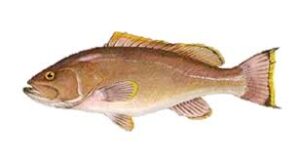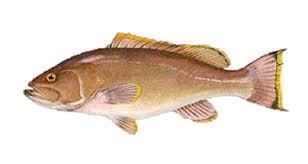The Dragon Symbolism in Chinese Sculpture: A Deep Dive into Cultural Masterpieces

The dragon is one of the most iconic and revered symbols in Chinese culture, representing an array of powerful and transformative qualities such as strength, wisdom, and the balance of nature. Over centuries, the dragon has transcended from a mythical creature to a symbol of prosperity, imperial authority, and divine protection. In the realm of Chinese art, particularly in sculpture, the dragon has held a significant and transformative role. Whether carved in stone, jade, or wood, Chinese sculptural representations of the dragon offer profound insight into the cultural values, aesthetic preferences, and religious beliefs of the time.
In this article, we will explore the symbolism of the dragon in Chinese sculpture, tracing its evolution through history and examining the contexts in which the dragon appears in various forms of Chinese sculpture. From the early dynastic periods to contemporary times, dragons have been an enduring motif, reflecting both the spiritual and imperial aspects of Chinese civilization.
The Dragon as a Divine Symbol in Early Chinese Sculpture
The earliest representations of dragons in Chinese sculpture can be traced back to the Neolithic period. During this era, early Chinese artisans crafted dragon-like creatures from jade and other materials, often in the form of small, intricate carvings. These early depictions were closely linked to the idea of fertility, protection, and the balance between natural forces.
One of the most iconic early dragon symbols comes from the Liangzhu culture (3400–2250 BCE), where jade artifacts in the shape of dragons were found. These early dragons, often with exaggerated, serpentine bodies and stylized facial features, were not necessarily seen as the imperial dragons known later in Chinese culture but rather as powerful spiritual beings linked to nature and the cosmos. These early dragon motifs were typically used in ritual objects, such as ceremonial blades and figurines, signifying their connection to spiritual practices and the guardianship of sacred spaces.
The Role of the Dragon in the Imperial Era
As Chinese civilization evolved, so too did the role of the dragon. During the Zhou dynasty (1046–256 BCE), the dragon began to take on more defined and complex symbolism. It became associated with imperial power, particularly with the emperor, who was believed to be the “Son of the Dragon” and a direct descendant of divine forces. This connection between the dragon and the emperor cemented the dragon’s status as the ultimate symbol of power, prosperity, and good fortune in Chinese culture.
The dragon was often used in royal architecture, including temple decorations and imperial palaces, as a symbol of the emperor’s divine right to rule. In sculptures, dragons were frequently carved into pillars, columns, and the gates of palaces, temples, and tombs. One of the most famous examples of dragon sculptures from this period is the dragon-shaped column base found in the Forbidden City in Beijing. These monumental dragon sculptures were designed to enhance the sense of imperial majesty and reinforce the idea that the emperor was the earthly representation of the divine dragon.
The symbolism of the dragon was not limited to royal buildings and ceremonies; it also found its way into the realm of art and craftsmanship. Dragon motifs became a popular subject in decorative sculptures, such as bronze vessels, porcelain, and goldwork, often appearing alongside other auspicious symbols like the phoenix, which represented the empress, and the lotus, which symbolized purity. These sculptures, often displayed in the homes of wealthy individuals, reinforced the belief that the dragon could bring fortune, protection, and harmony into the lives of the people.
The Dragon in Buddhist Sculpture
With the spread of Buddhism to China during the Tang dynasty (618–907 CE), the dragon took on new meanings within the religious and spiritual context. As Chinese artists began to incorporate Buddhist teachings and iconography into their work, the dragon became associated with the protection of Buddhist teachings and the safeguarding of sacred spaces.
In Buddhist sculpture, dragons were often depicted as protectors of the Dharma, the teachings of the Buddha, and as guardians of Buddhist temples and statues. These dragon representations were often placed at the base of Buddha statues or on the pedestals of sacred relics. In some instances, dragons were sculpted as supporting figures that held the Buddha’s teachings in their coils or clawed feet, symbolizing their role in preserving and upholding Buddhist values.
The inclusion of dragons in Buddhist art demonstrates the adaptability of the dragon symbol in Chinese culture, as it bridged indigenous beliefs with the new religious practices introduced by Buddhism. The integration of the dragon as a protector of Buddhist sites helped solidify the creature’s role as a divine and benevolent force, one that transcended cultural boundaries and represented the safeguarding of wisdom and spiritual power.
The Dragon as a Symbol of Protection in Architecture
Throughout Chinese history, the dragon remained a prominent symbol in both secular and sacred architecture. During the Tang and Song dynasties (618–1279), the dragon continued to be used in imperial architecture and even in the construction of grand temples and pagodas. These dragons, often depicted as majestic and imposing figures, were intended to protect the buildings and their inhabitants from evil forces.
The famous Longmen Grottoes (Dragon Gate Grottoes) in Luoyang, which were carved over several centuries beginning in the Northern Wei dynasty (386–534 CE), contain numerous sculptures of dragons. These dragons, carved into the stone walls of the grottoes, were not only artistic expressions but also served a spiritual purpose. They were believed to protect the sacred Buddhist statues housed within the grottoes and to symbolize the divine presence of the Buddha.
Another important example of the dragon’s role in architecture is the use of dragon sculptures in the roofs of palaces and temples. During the Ming (1368–1644) and Qing (1644–1912) dynasties, dragon motifs were prominently featured on roof ridges, serving as both decorative elements and symbols of imperial power. The most famous example of this can be seen in the roof decorations of the Forbidden City in Beijing, where gold-plated dragon sculptures can be found adorning the palace’s rooftops.
The Dragon in Traditional Chinese Carving and Jade Work
In traditional Chinese carving, particularly in jade work, dragons have remained a central motif for millennia. Jade, a stone highly valued for its beauty and spiritual significance, has been used to craft intricate dragon sculptures that date back to the Neolithic period. These jade dragons, often finely carved and polished, were used in ritual ceremonies and as burial objects for nobility and royalty.
During the Tang and Song dynasties, the art of jade carving reached new heights, with dragons becoming a popular subject for jade carvings. These dragons, with their coiled bodies, clawed feet, and long, flowing whiskers, were depicted in various sizes and forms, from small pendants to large sculptures. The dragon, in this context, was seen as a symbol of power, prosperity, and spiritual protection. It was believed that wearing or owning a jade dragon would bring the individual good fortune and ward off evil.
One of the most famous jade dragon sculptures is the Dragon and Phoenix pendant, a pair of intricate carvings often found in tombs and imperial collections. These pendants, crafted with great skill, depict a dragon and a phoenix, symbolizing the balance between the masculine and feminine forces and representing harmony in the universe.
Contemporary Representations of Dragons in Chinese Sculpture
In modern times, the dragon continues to be a popular motif in Chinese sculpture, though its representation has evolved to reflect contemporary themes and artistic expressions. While traditional depictions of dragons in jade, bronze, and stone remain significant, contemporary Chinese sculptors often experiment with different materials, techniques, and styles to create new interpretations of the dragon.
In the 20th and 21st centuries, dragons have been sculpted in a variety of media, including stainless steel, glass, and even recycled materials, reflecting the growing trend of eco-conscious art. Public art installations, such as the massive dragon sculptures in urban parks or public squares, continue to celebrate the dragon as a symbol of strength, vitality, and protection.
One notable example is the dragon sculpture at the base of the Longhua Pagoda in Shanghai, which is made of stainless steel and reaches an impressive height of 30 feet. This modern representation of the dragon maintains the traditional symbolism of protection and power while incorporating contemporary materials and design elements.
Conclusion: The Dragon as an Enduring Cultural Symbol
The dragon’s role in Chinese sculpture is a testament to its enduring cultural significance. From early jade carvings in the Neolithic period to grand imperial architectural works, the dragon has been a symbol of divine power, protection, and prosperity. Its enduring presence in Chinese sculpture reflects not only the artistic achievements of Chinese craftsmen but also the deep spiritual and cultural values that have shaped Chinese civilization for millennia.
Through the dragon’s evolving symbolism, we can see how this mythical creature has adapted to changing political, religious, and artistic landscapes while remaining an essential symbol of strength, wisdom, and protection. As Chinese sculpture continues to evolve, the dragon remains a central figure, reminding us of the power of tradition and the enduring connection between culture, art, and spirituality.


